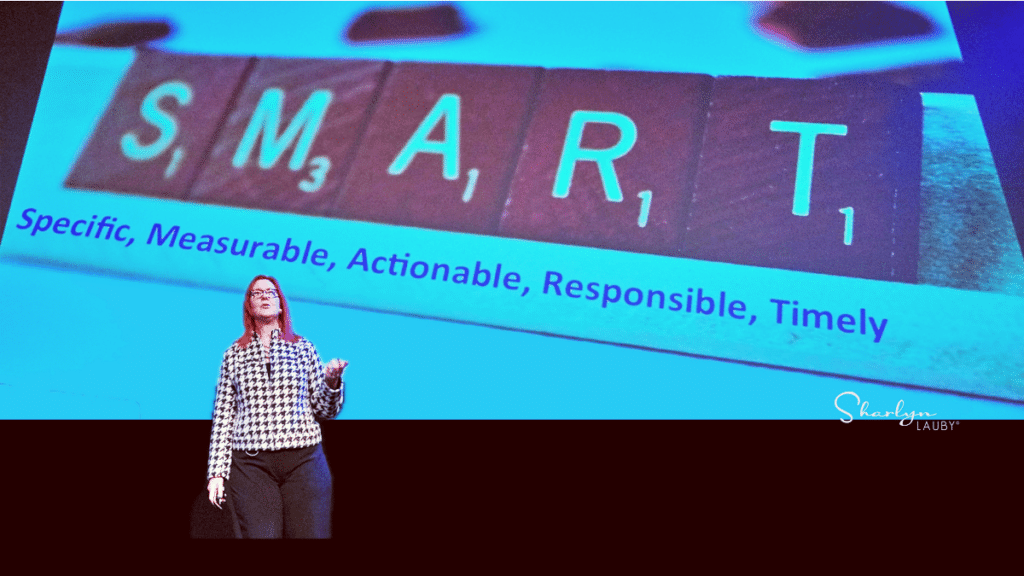Estimated reading time: 3 minutes
Regular readers of HR Bartender know I’m a big fan of SMART goals. SMART is an acronym which stands for specific, measurable, actionable, responsible, and time-bound.
- Specific represents the specific goal the organization is trying to accomplish.
- Measurable indicates how the organization will measure success.
- Actionable are the individual steps that it will take to accomplish the goal.
- Responsible identifies who is accountable for each step.
- Time-bound outlines the due date for each step.
At the Society for Human Resource Management (SHRM) Inclusion conference this year, I learned a new variation on the SMART acronym – SMARTIE. The “I” stands for inclusive and the “E” for equitable.
- Inclusive brings everyone into the process. Organizations should be creating SMART goals with everyone being welcome to participate.
- Equitable means that everyone can contribute. Organizations not only should invite everyone to participate but put the processes in place so it can happen.
I like the “IE” addition because it helps organizations answer two key questions when they create goals.
- Did we have the right people in the room when the goals were being discussed?
- And did we use the right process?
We should always ask those two questions when setting goals and making plans. The “IE” formalizes it into the SMART model, so it’s ensured to be a part of the process.
Some of you might be saying, “But the ‘IE’ is at the end. Shouldn’t the conversation about inclusion and equity happen earlier in the process?”. You’re absolutely right. But there’s no rule that says the only way to use the SMART acronym is in the order of the letters. When you’re developing SMART goals, it’s possible the organization will have to regularly adjust the measurements, responsibilities, and time frames to align with what’s happening in the organization.
I could definitely see a conversation where the organization starts discussing a goal and outlining steps to accomplish that goal then realizing there are people missing from the conversation. The organization then brings those individuals into the discussion. The key is making sure that those individuals being brought into the conversation feel welcome and that they feel their comments are welcomed. This cannot be a situation where the organization invites someone into the process but really doesn’t want them to do anything more than simply go along with whatever the group has been working on.
And this gets to the title of today’s article about SMARTIE goals producing better outcomes. The “IE” can help organizations bring the right people into the goal setting conversation, which means that the plan will be better.
I’ve always been an advocate of “good processes yield good outcomes”. Part of creating a good process is making sure the right people are in the room and they are welcome to participate.
Image capture by Sharlyn Lauby while exploring the streets of Reykjavík, Iceland
The post SMARTIE Goals Will Produce Better Organizational Outcomes appeared first on hr bartender.



0 Commentaires